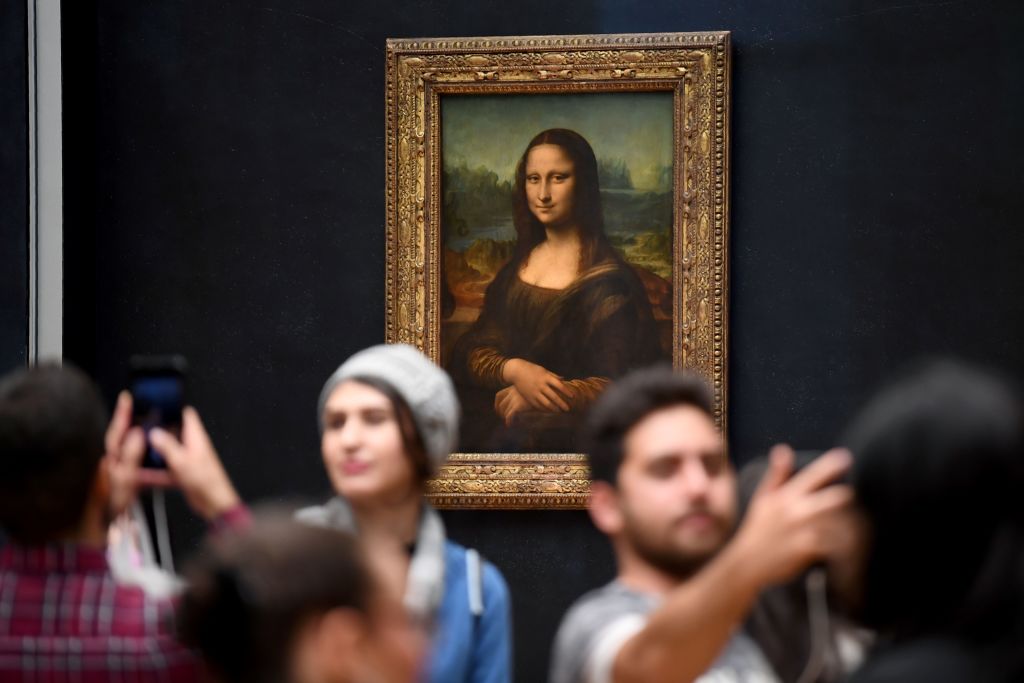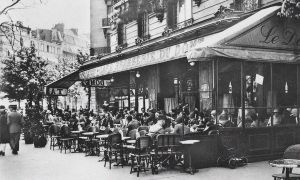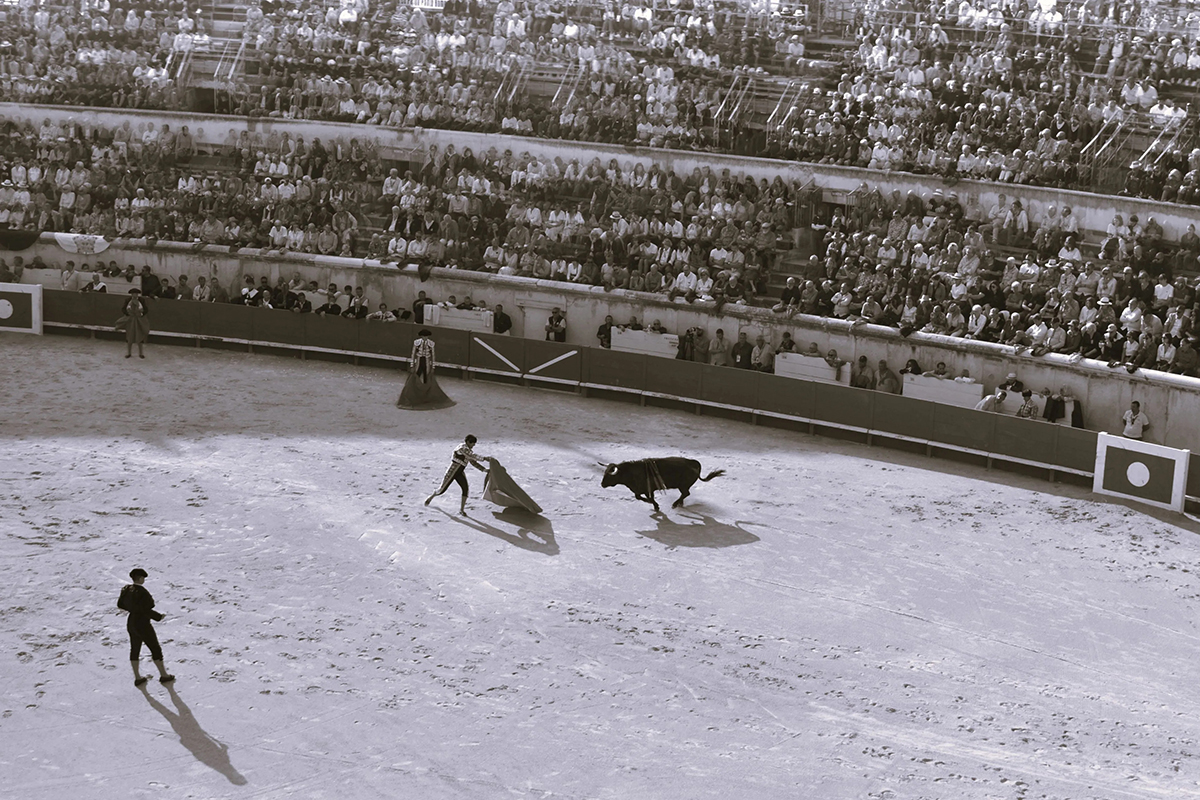This article is in
The Spectator’s December 2019 US edition. Subscribe here.
The first time ever I saw her face, she was smiling. I knew her face before I saw it, but I cannot remember when I first knew it, because I had always seen it. But when I first saw her in the flesh, I couldn’t really see her at all. She was behind thick glass and a waist-high wall, and a crowd of people 20-deep were pushing toward her, shouting and pointing and taking photographs. She was still smiling, but as I forced my way out of the crowd, I felt as though the smile no longer expressed the mysterious inner mood of a high-born Florentine sitting in a loggia, but the bemused contempt of a woman sitting in the stocks for the entertainment of the mob. ‘Mona Lisa, Mona Lisa, men have named you…’
The aristocrat’s Grand Tour has become the plebeian’s package tour. No one says no to the money. The Venetians have been in this game for longer than anyone, but the most they’re willing to do as their city sinks under the weight of the visitors is to adjust the price of admission. And perhaps that is the way it should be. For if there is such a thing as human rights, then tourism is a human right. So is spending your hard-earned however you choose.
Our great museums were designed as repositories of achievement and memory. Our great cities are similar repositories, and in a global civilization these inheritances belong to everyone. Many cities and countries cannot afford to refuse the tourists anyway, especially dirty, dysfunctional and corrupt places like Egypt, India and New York City. But the numbers are now so great they’re ruining the experience for everyone.

Among my recent souvenirs: at the British Museum, the security line is longer than the one at Heathrow. In the Sistine Chapel, the guards add to the swimming-bath ambience by silencing the crowd with whistles. The Museum of Modern Art in New York City is so crowded, and its ventilation system so overloaded, that I shuffle forward in a halitotic fug, to find the van Goghs completely obscured by a shifting crowd of selfie-takers. In a dogleg back street in Venice, my daughter and I are crushed between advancing tour groups. At the Louvre, I fight for a spot in front of the Mona Lisa, then give up after a young man asks me why I think she’s smiling and suggests, ‘She’s just been fucked.’
The peoples of Asia, having adopted our middle-class work habits, now follow our meat-eating, plane-hopping, rubber-necking leisure habits. There is no alternative. Or rather, the alternatives are appalling: snobbery, bigotry and tyranny. Should visitors be tested on the wives of Henry VIII before they’re allowed to enter the Tower of London, or examined on their theology before admission to the Michelangelos in the Vatican? Should the European Union bar its doorless gates to coach parties? Should the price of entry be raised to prohibitive levels, to keep out the noisy brown people so that subscribers to the New York Review of Books can enjoy their patrimony in peace? Or just ban everyone from flying anywhere at any time, except when they’re celebrities or people like us, or when we want to make money from them on our terms?
Anyone who lives in one of the great cities or frequents their great museums knows these impulses. And anyone knows they are an abrogation of decency. The tourists are a polite Vandal horde, but we were them not so long ago: the grandparents who took the package trip to Europe, the parents with Machu Picchu on the bucket list. And we still are them, even though we chant: ‘I am a traveler, You are a tourist, He is urinating in the fountain, She has her feet in the Grand Canal.’
Twentieth-century tourism ran on an 18th-century model, mass-marketed in the 19th century. Twenty-first century tourism has reached a state of surreal redundancy in which quantity erases quality and no one can reach the objects they’ve come so far to see. Rather than surrender, we need the grace to accept what we cannot change and the wit to change what we cannot accept. Which is why I went to Paris to see the Louvre’s Leonardo da Vinci exhibition.
Leonardo da Vinci is a massive and magnificent big-ticket show. Eleven of the fewer than 20 oils attributed to the Tuscan titivator are here, along with ‘Salvator Mundi’, which everyone except the auction house which sold it and the anonymous sucker who bought it knows isn’t a real Leonardo — even the Louvre, which attributes it here to ‘workshop of’. I had the biggest ticket of all. Allowed to walk through just ahead of the press pack, I was alone apart from the occasional guard.
I stood in front of each painting and drawing, and no one crossed my field of vision or spoke or took a photograph. I put my nose to the canvas to study the smoke-like sfumato effect that makes Leonardo’s faces shimmer with life, then moved out to study the structure of the paintings. I felt the ecstasy of aesthetic transcendence. This was how it was for the Medici when they strolled upstairs to check out their Leonardos in the Uffizi.
Lisa Gherardini wasn’t there. She remained in the big gallery, bunkered against the tourists. Instead, we met in a side room. When I put on the virtual reality headset, she looked me in the eye so clearly that I felt like an adulterer. I saw the forbidden: the chair on which she sits, her body from the waist down, the shoes that I never knew she wore and the back of her head that I never knew she had, the splits in the back of the poplar panel from the warping of the wood and an attack by a madman with an ax. I saw how her ringlets moved when she nodded, and even the brushstrokes of the diaphanous shawl that Leonardo places on her like a sfumato mist. She did things I had never imagined, gesturing to summon images of other Renaissance paintings and frowning when the voice-over described how some art historians had thought she was a prostitute.
Suddenly we were together on the loggia. I saw as she had seen: the wall of thin bricks, the stone arches, the fictionalized landscape behind her right shoulder, which now opened out infinitely. One of Leonardo’s flying machines appeared, hovering by the central arch. I stepped in and soared.
Admittedly, the quality of the simulation was like that of a computer game. But the experience was enough to create the imaginative contact that an overcrowded gallery can no longer give. As for the dignity of art, Leonardo is more compatible with VR than any other Renaissance painter: cold where Michelangelo is passionate, he is an expert technician, a manipulator of emotive surfaces.
A VR primer can prepare visitors before they’ve even packed their bags, giving them not just the sense of what they’ll see, but also something of its meaning. That preparation might even compensate for the crush in front of the real thing and help visitors toward the increasingly elusive experience of aesthetic contact — if not the contact that comes through the privilege of solitary physical immersion that I enjoyed at the Louvre, then at least an imaginative immersion.
This digital Baedeker can also reshape tourists’ expectations. Every major city now has sites that are overrun and other sites that are, weirdly, still peaceful: Ca’ Rezzonico in Venice, the Wallace in London, the Jacquemart-André in Paris, the Frick in New York, the Spada in Rome. And in every major museum, the river of tourists rushes past entire wings. VR can spread the load by diverting tourists to lightly trafficked museums and lesser-known paintings.
What matters now is whether museums use VR to deepen our focus and comprehension, or, as American museums in particular now strive to do, to explore new dimensions in crass distraction and profit generation. I’ll never forget my afternoon alone with the Leonardos and Lisa Gherardini. The same technology may yet be our best hope of giving an increasingly crowded world something to remember.
This article is in The Spectator’s December 2019 US edition. Subscribe here.

























